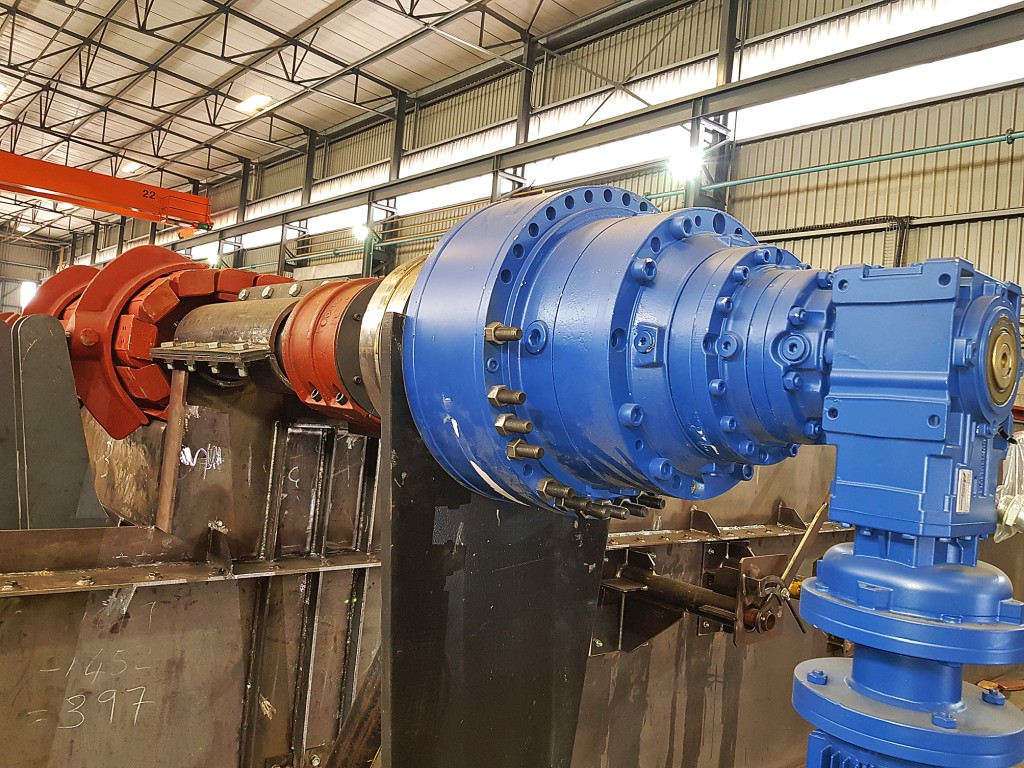By far the largest continuous ash discharge (CAD) stroker designed and manufactured by John Thompson to date was commissioned at a sugar mill in Mexico late last year.

A close-up view of the stroker drive for the CAD stroker. The reduction gearbox and motor seen on the right are exceptionally large due to the very low speed and high torque requirements of the stoker.
Although manufacture of the stoker was completed and delivered on schedule in late-2018, the final commissioning was delayed due to unexpected complications arising on site which prevented it from being installed as planned.
John Thompson was contracted at the end of 2017 to custom design and manufacture the extra-large stoker for a new 300tph 8750kPa(g) pressure bagasse-fired watertube boiler for the Mexican sugar mill. The contract was awarded by Caldema, a Brazil-based watertube boilers manufacturer for which John Thompson has previously manufactured watertube boiler stokers.
The stoker, weighing 170t and with a total grate area of 99m2, is substantially larger than the previous largest CAD stoker John Thompson has produced, which had a grate area of 76.7m² and was manufactured several years ago for the Xinavane sugar mill in Mozambique.
“In contrast to what we’ve done before in designing large stokers, with this one the drive beam and idler beam had to be re-engineered to withstand the large span. In addition, the zoning arrangement was optimised for greater ease of installation,” said Christof Kotze, John Thompson’s Welding & Manufacturing Engineer.
Upon completion of manufacture the stoker was assembled in John Thompson’s plant in Bellville, Cape Town, to enable visiting senior Caldema personnel to view it as it would be when finally assembled on site at the mill. It was then dismantled for shipment to its final destination.
However, when it was installed on the foundation that had been built to support it, the foundation and the stoker’s four corner supports sank into the ground because the underground water table was higher than had been anticipated.
This necessitated having to cast new stronger and deeper foundations next to the failed foundations and then lift the stoker with hydraulic jacks from where it had sunk and re-install it on the new foundations.
John Thompson wrote the procedure for the lifting of the stoker and also designed additional steel supports which it advised be installed on the stoker. These were manufactured locally.
